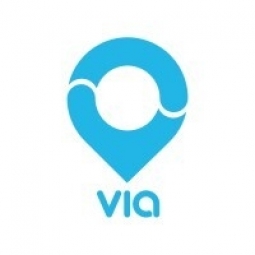Applicable Industries
- Cities & Municipalities
- Transportation
Use Cases
- Driver Performance Monitoring
- Personnel Tracking & Monitoring
Services
- System Integration
About The Customer
The customer in this case study is the North Central Regional Transit District (NCRTD), a public transportation provider in northern New Mexico. NCRTD operates across a vast rural area of approximately 10,000 square miles, linking small cities, rural communities, and Native pueblos across the state. The district offers a mix of fixed-route and demand-responsive bus services to cater to the diverse transportation needs of the communities it serves. However, the district faced significant challenges in managing its operations due to the COVID-19 pandemic and a driver shortage, which led to route cancellations and consolidations.
The Challenge
The North Central Regional Transit District (NCRTD) in rural northern New Mexico faced a significant challenge in providing transit services across a vast area of approximately 10,000 square miles. The district, which links small cities like Santa Fe and Taos, rural communities, and Native pueblos across the state, operates a mix of fixed-route and demand-responsive bus services. However, the COVID-19 pandemic disrupted demand patterns, and a driver shortage led to route cancellations and consolidations. As a result, the NCRTD team found themselves making route modifications on a weekly basis, a task that was nearly impossible to manage efficiently in such a large and complex system without the aid of advanced technology.
The Solution
The NCRTD adopted Remix, a technology solution that drastically reduced the staff time required to make route modifications. With Remix, one staff member could complete the bi-annual service re-bid process, which previously took a month of staff time, in just a single day. The technology automatically identified errors that were common in the manual planning and scheduling process. This efficiency allowed NCRTD to make more frequent changes in response to community needs and requests. Furthermore, Remix’s runcuts and rosters made better use of NCRTD’s limited driver pool, enabling the agency to reduce the number of driver shifts required for its network by 20%. As a result, NCRTD’s transit system became more efficient and flexible, ready to meet any future challenges.
Operational Impact
Quantitative Benefit

Case Study missing?
Start adding your own!
Register with your work email and create a new case study profile for your business.
Related Case Studies.

Case Study
Turning A Stadium Into A Smart Building
Honeywell created what it called the “intelligent system” for the National Stadium in Beijing, China, turning the venue for the opening and closing events at the 2008 Summer Olympics into a “smart building.” Designed by highly controversial artist Ai Weiwei, the “Bird’s Nest” remains one of the most impressive feats of stadium architecture in the world. The 250,000 square meter structure housed more than 100,000 athletes and spectators at a time. To accommodate such capacity, China turned to Honeywell’s EBI Integrated Building Management System to create an integrated “intelligent system” for improved building security, safety and energy efficiency.
.png)
Case Study
Smart Street Light Network (Copenhagen)
Key stakeholders are taking a comprehensive approach to rethinking smart city innovation. City leaders have collaborated through partnerships involving government, research institutions and solution providers. The Copenhagen Solutions Lab is one of the leading organizations at the forefront of this movement. By bringing together manufacturers with municipal buyers, the Copenhagen Solutions Lab has catalyzed the development and deployment of next-generation smart city innovations. Copenhagen is leveraging this unique approach to accelerate the implementation of smart city solutions. One of the primary focus areas is LED street lighting.

Case Study
Airport SCADA Systems Improve Service Levels
Modern airports are one of the busiest environments on Earth and rely on process automation equipment to ensure service operators achieve their KPIs. Increasingly airport SCADA systems are being used to control all aspects of the operation and associated facilities. This is because unplanned system downtime can cost dearly, both in terms of reduced revenues and the associated loss of customer satisfaction due to inevitable travel inconvenience and disruption.

Case Study
IoT-based Fleet Intelligence Innovation
Speed to market is precious for DRVR, a rapidly growing start-up company. With a business model dependent on reliable mobile data, managers were spending their lives trying to negotiate data roaming deals with mobile network operators in different countries. And, even then, service quality was a constant concern.

Case Study
Buoy Status Monitoring with LoRa
The Netherlands are well-known for their inland waterways, canals, sluices and of course port activities. The Dutch Ministry of Infrastructure indicates that there are thousands of buoys and fixed items in and near water environments that would profit from IoT monitoring. One of the problems with buoys for example, is that they get hit by ships and the anchor cable breaks. Without connectivity, it takes quite some time to find out that something has happened with that buoy. Not to mention the costs of renting a boat to go to the buoy to fix it. Another important issue, is that there is no real-time monitoring of the buoys at this moment. Only by physically visiting the object on the water, one gains insight in its status.








